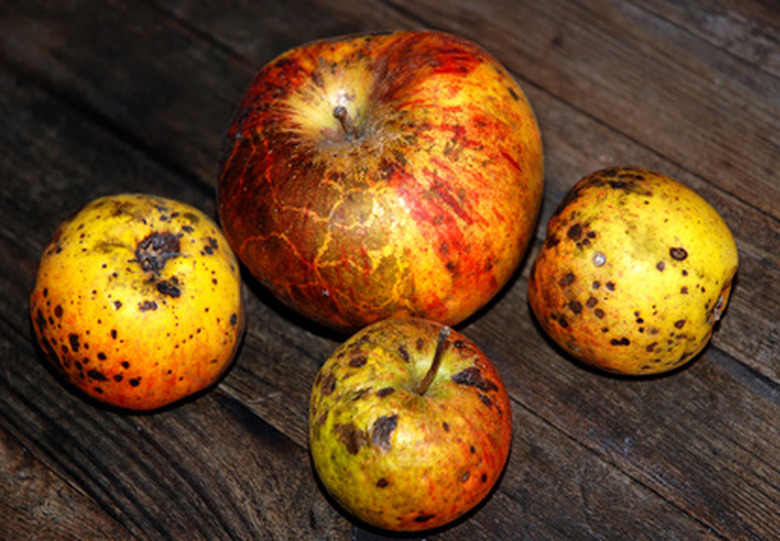Can You Spray Weed Killer Around A Fruit Tree?
Weeds create a host of problems for fruit trees. They compete with fruit trees for soil nutrients, sunlight and water, resulting in smaller harvests and reduced crop quality. Moreover, some weeds serve as hosts for diseases that can seriously injure fruit trees. Fortunately, certain weed killers are safe for use near fruit trees.
Herbicide Classifications
Herbicides can be divided into two main categories: selective and nonselective. Selective herbicides target specific weeds, leaving desired plants, grasses, and trees uninjured. Nonselective herbicides, however, injure everything they touch. Consequently, selective herbicides are best used near fruit trees. Keep in mind, however, that these classifications only hold up if herbicides are used properly. Excessive amount of a selective herbicide applied to a site can injure plants, grasses and trees that are not targets.
- Weeds create a host of problems for fruit trees.
- Fortunately, certain weed killers are safe for use near fruit trees.
Herbicide Application
Granular herbicides can be applied using a fertilizer spreader. Liquid herbicides can be applied using a pressure sprayer. The time of application varies depending on the climate and particular weed you are trying to control. Herbicides are, however, broken up into two main categories regarding application times: pre-emergent and post-emergent. Pre-emergent herbicides are applied before the weeds germinate, whereas post-emergent herbicides are applied once the weeds have emerged from the soil.
Concerns
One of the main concerns when spraying herbicides is drift. Drift refers to the carrying of herbicides by wind currents to areas that are not meant to be treated, such as rows of fruit trees. To minimize drift, avoid spraying herbicides on windy or humid days. Moreover, use a sprayer designed to spread herbicides. Generally, these sprayers will have a nozzle constructed in such a way to minimize drift. Another concern is your own health when handling herbicides. Do not tank-mix herbicides unless you know what you are doing. Additionally, wear proper safety equipment, including rubber gloves and eye protection, whenever handling herbicides.
- Granular herbicides can be applied using a fertilizer spreader.
- Moreover, use a sprayer designed to spread herbicides.
Alternatives
Weeds can sometimes be controlled without the use of herbicides. Minor weed problems can be controlled by hand-pulling, hoeing or tilling. If hoeing or tilling, strive to avoid damaging the roots of nearby fruit trees. Finally, weeds are unlikely to become a problem in areas where desirable grasses, plants and trees are healthy. Mow, fertilize, irrigate and aerate properly to avoid problems.
